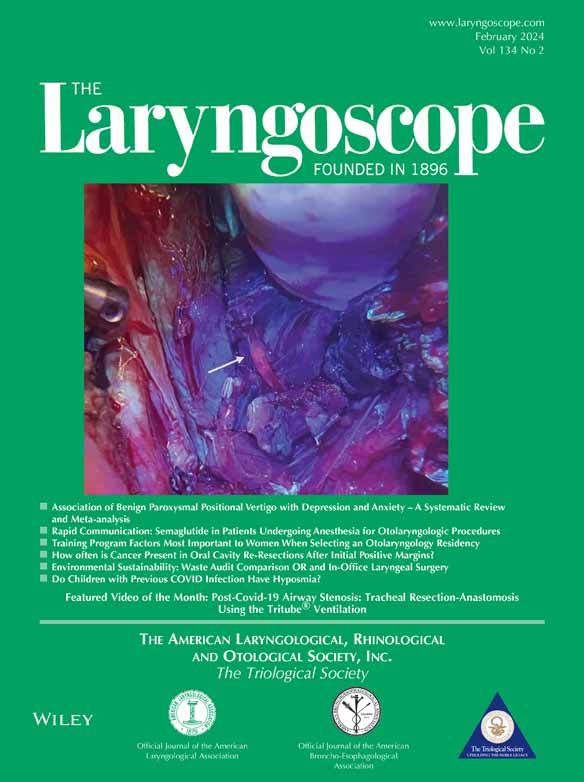Quantitative Evaluation of Vocal Bowing Following Bilateral Thyroplasty in Age-Related Vocal Atrophy
The authors have no funding, financial relationships, or conflicts of interest to disclose.
This article was presented as a poster presentation at the ABEA meeting on May 4–5th, 2023, in Boston, MA.
Abstract
Objective
Age-related vocal atrophy (ARVA) is associated with vocal fold bowing, persistent glottal gap during phonation, and dysphonia. Bilateral medialization thyroplasty is sometimes performed in patients with ARVA to improve vocal fold closure and voice. We set out to quantify stroboscopic changes in vocal fold bowing, glottal closure, and abduction angle following bilateral thyroplasty and determine how these changes affect voice quality among patients with ARVA.
Methods
Fifteen individuals with ARVA who underwent bilateral medialization thyroplasty were included in this study. Two independent investigators calculated bowing index (BI), normalized glottal gap area (NGGA), and maximum abduction angle from laryngostroboscopic exams using ImageJ™. Consensus Auditory-Perceptual Evaluation of Voice (CAPE-V) and patient-reported measures were collected before and after thyroplasty.
Results
Thyroplasty resulted in a 10-point improvement in overall CAPE-V (Mean dif −10; 95% CI –17, −3.3, p < 0.01) and VHI-10 (mean dif −3.8; 95% CI –9.8, 2.3, p = 0.19, n = 8). NGGA and BI significantly decreased following surgery (mean dif −78; 95% CI –155, −1.5, p = 0.05; and mean dif −2.1; 95% CI –2.4, −0.84, p < 0.01, respectively). BI correlated with CAPE-V scores (r = 0.66, 95% CI 0.22, 0.87, p < 0.01). When considering the normalized combined contributions of both NGGA and BI, there was a stronger correlation in CAPE-V scores (r = 0.87, 95% CI 0.50, 0.97, p < 0.01) compared with either measure alone.
Conclusions
Thyroplasty resulted in a decrease in vocal fold bowing, glottal gap area, and CAPE-V scores in patients with ARVA. Correction of vocal bowing and glottal gap, following bilateral thyroplasty, improved voice measures following surgery. Quantitative evaluation of vocal fold morphology may be valuable when assessing the severity and treatment-response in patients with ARVA following bilateral thyroplasty. Laryngoscope, 134:835–841, 2024




